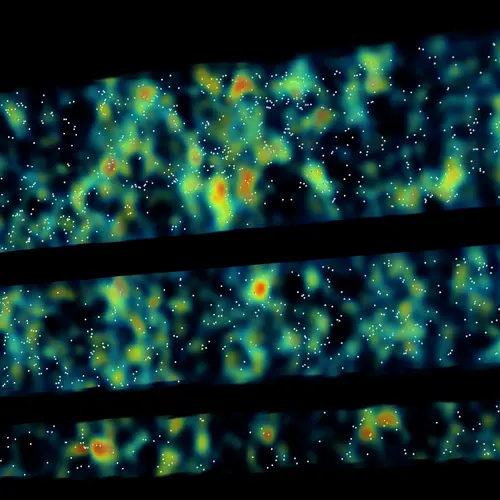
Using the Magellan telescopes at Carnegie’s Las Campanas Observatory in Chile, the research team, led by Carnegie’s Andrew Newman, was able to look for shadows cast by intergalactic hydrogen gas within protoclusters on the galaxies behind them. This image shows a map of intergalactic hydrogen where yellow-to-red represents high density regions and blue-to-black indicates areas of low density. Credit: Andrew Newman.